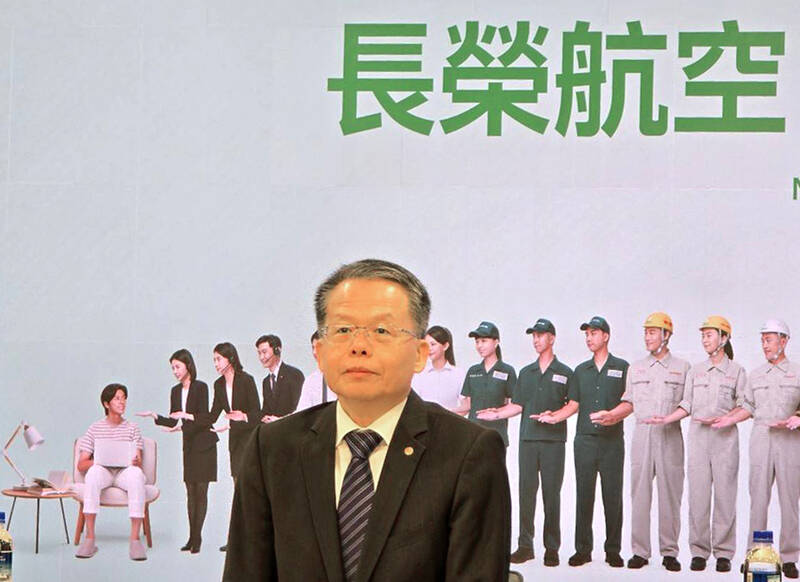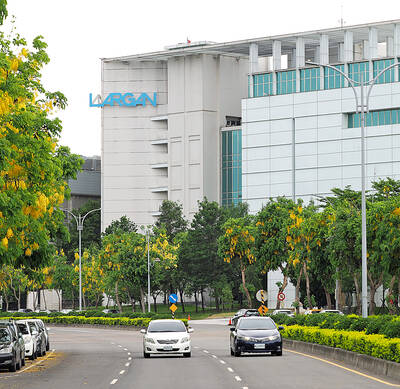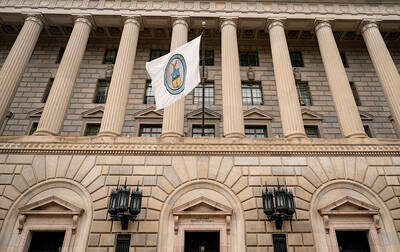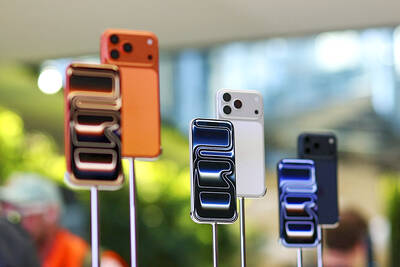Amid booming travel demand across the globe, airfares will not go back to levels seen before the COVID-19 pandemic and high airfares will continue into next year, EVA Airways Corp (長榮航空) said yesterday.
The trend toward higher fares has been driven by robust air passenger travel around the globe combined with inflationary pressures and service capacity restraints, EVA Air president Clay Sun (孫嘉明) said at an investors’ conference in Taipei.
Sun’s remarks came as American Express Global Business Travel Group Inc said in its annual report recently that global airfares are set to become more expensive next year even as gains moderate, with ticket prices reflecting higher costs and lingering supply-chain disruptions.

Photo: CNA
Fares on most routes will rise, though the size of the increases will likely vary greatly by region. North America and Europe are expected to see more “modest” increases of around 2 percent while Asia and Australasia, among the last regions to unwind pandemic curbs, are set to see rises of close to 14 percent, the report said.
EVA Air is expected to see 20.4 percent growth in the Northeast Asian passenger market this year, well above its average growth for the rest of the world, Sun told investors, adding that the Asia-Pacific market is to see even stronger growth next year.
In the first 10 months of this year, the airline saw overall passenger revenue grow 8.4 percent year-on-year, while passenger numbers jumped nearly 20 percent and capacity (measured by available seat kilometers) rose 9.7 percent.
By region, the US market accounted for 44 percent of total passenger revenue, followed by Northeast Asia at 19 percent and Europe at 15 percent, EVA Air said.
Given the expected growth in passenger demand next year, the airline is working on new passenger and cargo charter flights to Japan’s Hakodate during the Lunar New Year holiday in January next year and on the addition of flights to Aomori and Matsuyama for the cherry blossom season.
EVA Air also intends to add flights to Kobe during the April-to-October period to provide more capacity for travelers headed to next year’s Osaka World Expo, Sun said.
The airline has also decided to add Dallas to its other eight destinations in North America, and it expects to fly five weekly flights to the Texas city starting on Nov. 3 next year, he said.
At a time when many high-tech companies are moving their headquarters from Silicon Valley to Texas, Dallas is a good fit for EVA Air to complete its network for transit passengers proceeding to Central and South America, he added.
EVA Air is also upbeat about the prospects of its air cargo business, Sun said, citing the growth of artificial intelligence applications and strong demand from the e-commerce sector.
The airline reported revenue of NT$57.16 billion in the third quarter, up 7.3 percent year-on-year, while net profit soared 50.8 percent to NT$8.99 billion, with earnings per share (EPS) of NT$1.66.
In the first three quarters of this year, the airline posted combined revenue of NT$164.45 billion, an annual increase of 12.4 percent, while net profit totaled NT$21.49 billion, up 31 percent, with EPS of NT$3.98, the highest ever for the nine-month period, it said.

Taiwan’s foreign exchange reserves hit a record high at the end of last month, surpassing the US$600 billion mark for the first time, the central bank said yesterday. Last month, the country’s foreign exchange reserves rose US$5.51 billion from a month earlier to reach US$602.94 billion due to an increase in returns from the central bank’s portfolio management, the movement of other foreign currencies in the portfolio against the US dollar and the bank’s efforts to smooth the volatility of the New Taiwan dollar. Department of Foreign Exchange Director-General Eugene Tsai (蔡炯民)said a rate cut cycle launched by the US Federal Reserve

Handset camera lens maker Largan Precision Co (大立光) on Sunday reported a 6.71 percent year-on-year decline in revenue for the third quarter, despite revenue last month hitting the highest level in 11 months. Third-quarter revenue was NT$17.68 billion (US$581.2 million), compared with NT$18.95 billion a year earlier, the company said in a statement. The figure was in line with Yuanta Securities Investment Consulting Co’s (元大投顧) forecast of NT$17.9 billion, but missed the market consensus estimate of NT$18.97 billion. The third-quarter revenue was a 51.44 percent increase from NT$11.67 billion in the second quarter, as the quarter is usually the peak

The US government on Wednesday sanctioned more than two dozen companies in China, Turkey and the United Arab Emirates, including offshoots of a US chip firm, accusing the businesses of providing illicit support to Iran’s military or proxies. The US Department of Commerce included two subsidiaries of US-based chip distributor Arrow Electronics Inc (艾睿電子) on its so-called entity list published on the federal register for facilitating purchases by Iran’s proxies of US tech. Arrow spokesman John Hourigan said that the subsidiaries have been operating in full compliance with US export control regulations and his company is discussing with the US Bureau of

Pegatron Corp (和碩), a key assembler of Apple Inc’s iPhones, on Thursday reported a 12.3 percent year-on-year decline in revenue for last quarter to NT$257.86 billion (US$8.44 billion), but it expects revenue to improve in the second half on traditional holiday demand. The fourth quarter is usually the peak season for its communications products, a company official said on condition of anonymity. As Apple released its new iPhone 17 series early last month, sales in the communications segment rose sequentially last month, the official said. Shipments to Apple have been stable and in line with earlier expectations, they said. Pegatron shipped 2.4 million notebook